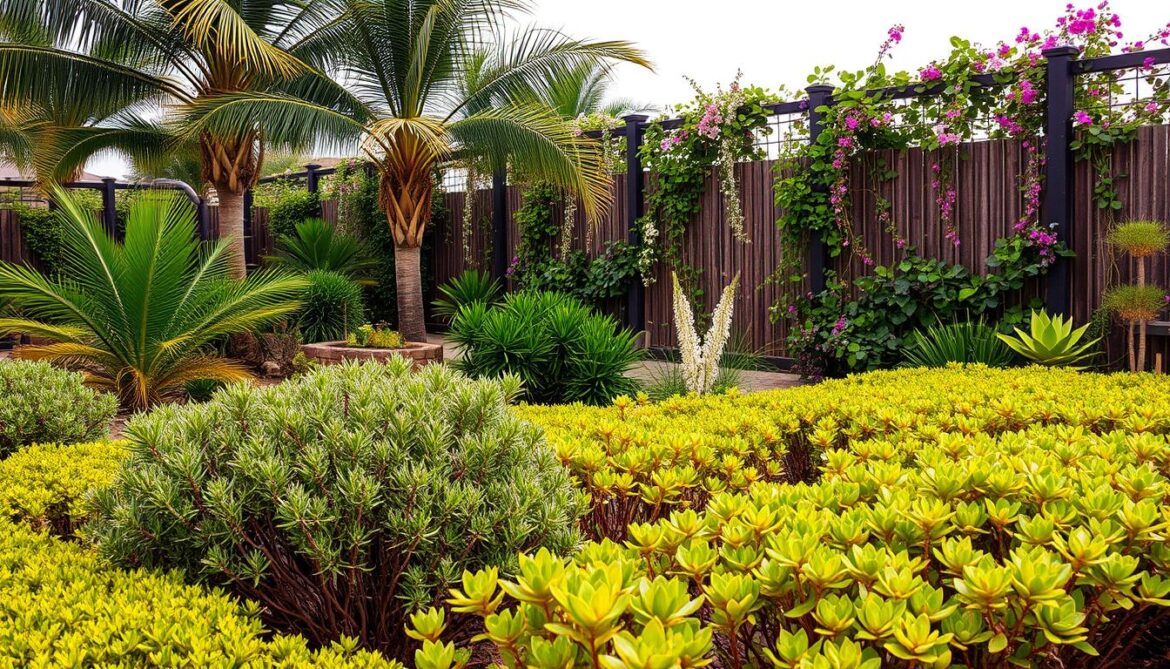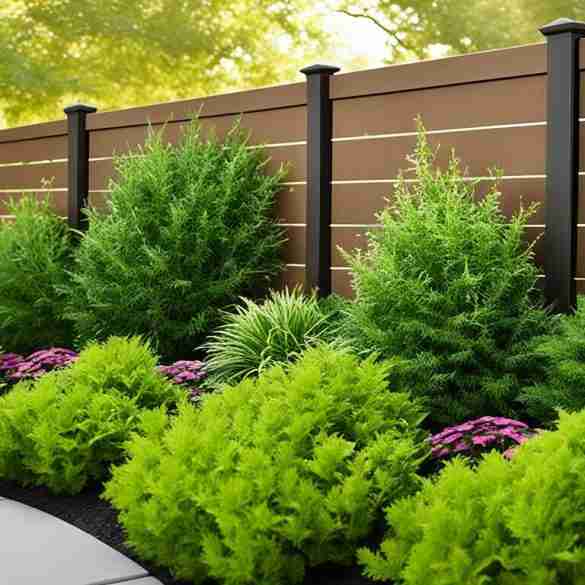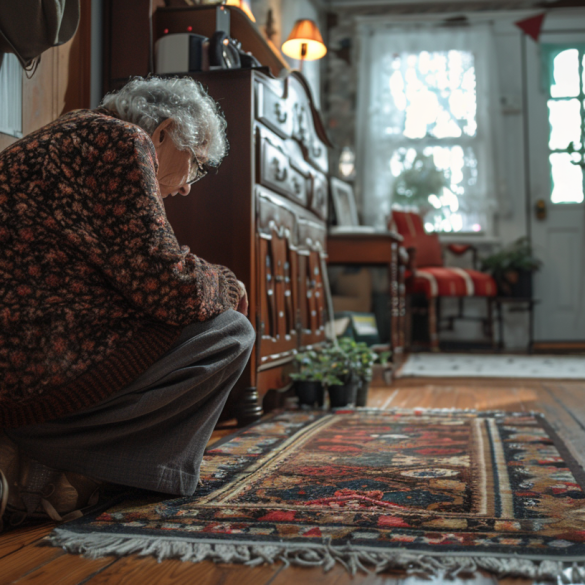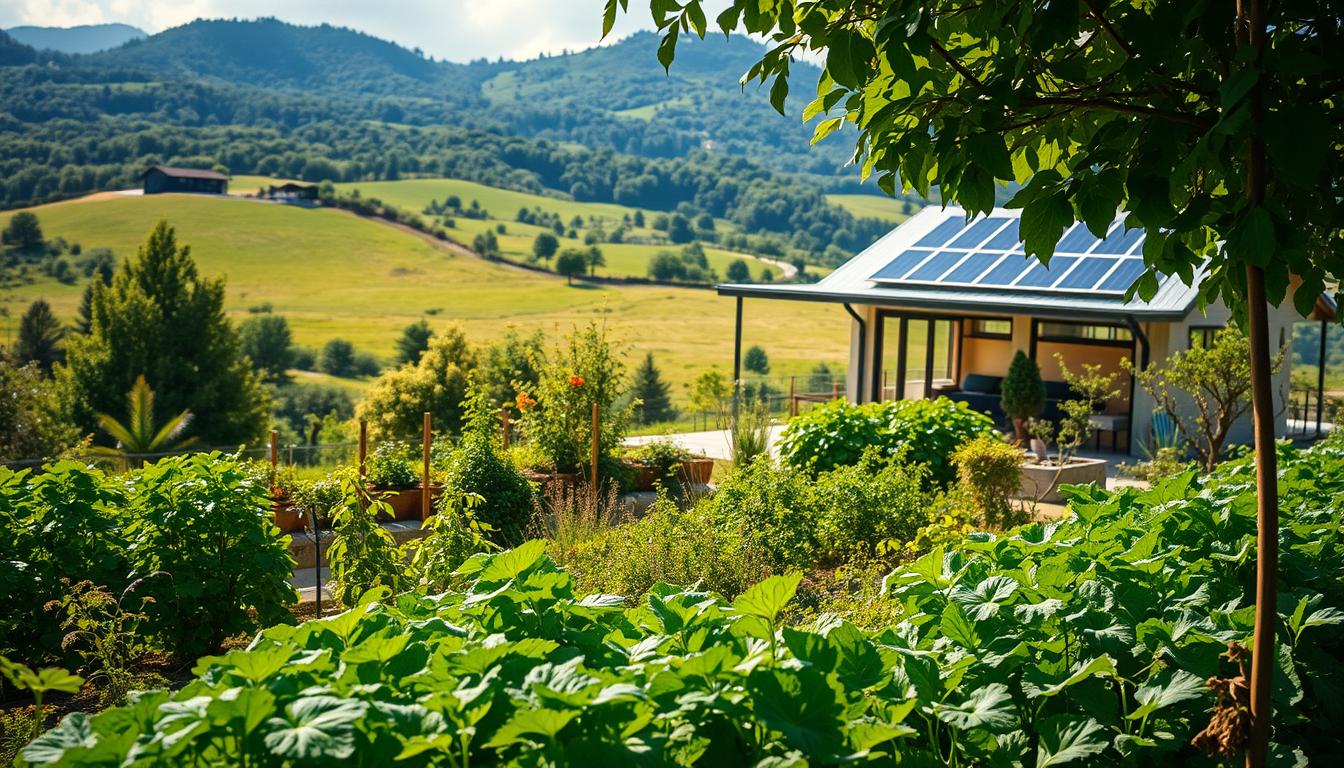A simple terracotta pot weighing just 2.5 kilograms becomes a deadly missile when winds hit 200 km/h. This is a harsh reality for thousands of Australian homeowners every storm season.
Many people don’t see the dangers in their outdoor spaces. That cute garden gnome or light patio chair can turn into costly damage. Your responsibility goes beyond your own backyard – loose items can harm neighbours’ homes too.
Effective cyclone preparation doesn’t mean giving up your outdoor space. Smart strategies keep your garden looking great while keeping everyone safe. This guide offers practical tips for emergency planning. They protect your investment and your neighbours’ homes.
Key Takeaways
- Garden items weighing as little as 2-3 kg become dangerous projectiles in cyclonic winds
- Property owners face legal liability for damage caused by unsecured outdoor items
- Effective preparation balances beautiful outdoor living with community safety responsibilities
- Simple planning strategies can prevent thousands of dollars in storm damage
- Cyclone-proofing your yard protects both your property and neighbouring homes
What everyday items can turn into dangerous missiles?
When cyclone winds get too strong, your backyard turns into a danger zone. Everyday items become deadly weapons that can travel far and cause harm.
A simple plastic chair, weighing only 2-3 kilograms, can fly over 100 metres in winds of 150 km/h. Garden tools, decorations, and small pots become missiles too. Knowing which items are most dangerous is key to yard safety.
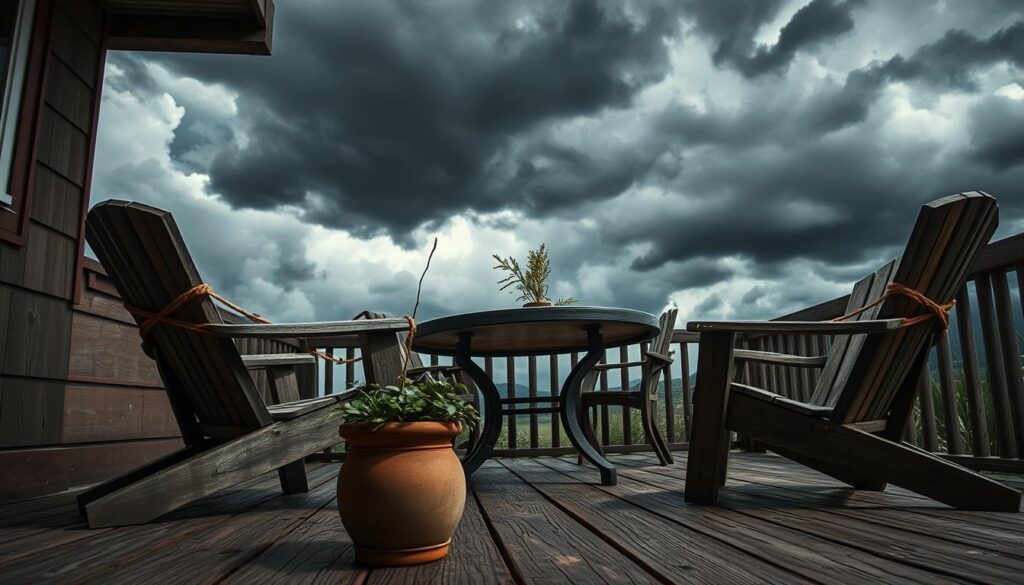
BBQ gas bottles are a double threat. They can fly and also cause fires and explosions if damaged. Pool gear, outdoor speakers, and solar lights become hazards in bad weather.
Where is the safest place to store my outdoor furniture and BBQ?
Securing outdoor furniture means finding a safe place inside. Garages, sheds, or basements are best for keeping items safe from cyclone winds. These places stop items from flying off and causing damage.
If you can’t store items inside, make a safe outdoor spot. Use heavy-duty straps, anchor furniture, stack items, and cover with tarps.
For BBQs, disconnect gas bottles and store them upright in a well-ventilated area. Never keep gas bottles in places like garages. Instead, tie them to a strong post or fence with proper brackets.
What should I do with all my hanging baskets and pot plants?
Take down hanging baskets and elevated pots 48-72 hours before the cyclone hits. These items can easily catch wind and cause damage when they fall or fly.
Start your debris management plan by:
- Removing hanging baskets and wind chimes
- Moving potted plants to the ground
- Grouping small pots in safe spots
- Securing heavy pots against walls
Large pots can stay if they’re over 25 kilograms when full. But, remove decorations and secure soil with plastic.
Bring special plants inside for safety. Your orchids or succulents will be safer in your home during the storm.
Are kids’ toys and play equipment like trampolines a major risk?
Children’s play equipment is very dangerous in cyclones. A 3-metre trampoline can fly in winds as low as 80 km/h. It can travel far and cause a lot of damage.
Storm debris removal planning should include these steps for play equipment:
- Disassemble trampolines completely – don’t just tip them over
- Store trampoline mats and springs in sheds or garages
- Anchor swing sets with extra stakes
- Remove all loose toys, balls, and outdoor games
Sandboxes need special care too. Cover them with tarps to stop sand from becoming a hazard. Remove any toys or tools from the sandbox area.
Bicycles and scooters should go inside your home or garage. They’re light and can become dangerous missiles, but they’re also valuable.
Good yard safety doesn’t just protect your property. It keeps your whole neighbourhood safe. A flying trampoline doesn’t care about property lines, and your efforts help everyone stay safe during storms.
Can the trees and plants in my garden be a threat?
The lush tropical landscaping in Queensland gardens is beautiful but can be a cyclone threat. Trees and plants that offer shade and privacy can damage properties when strong winds hit. It’s important to understand how to manage your garden’s vegetation for storm damage prevention.
Arborists say tree damage during cyclones can cost homeowners thousands. But, with the right planning and care, you can lower these risks. This way, you can keep your garden beautiful and eco-friendly.
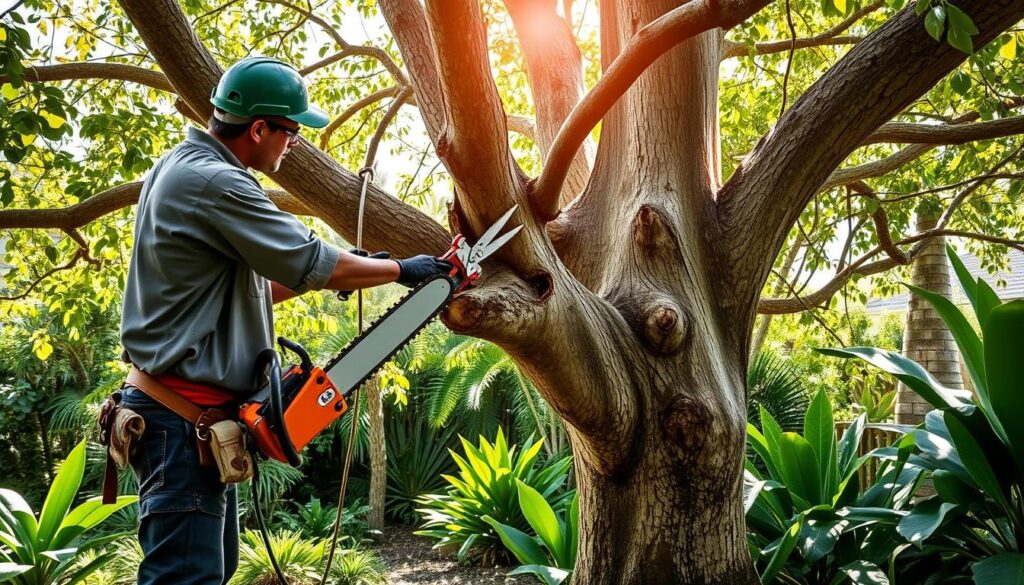
Which types of trees are most likely to fall over in high winds?
Shallow-rooted trees are most at risk in cyclones. Norfolk Pines are very vulnerable because of their shallow roots and tall shape. When the soil is wet and winds are strong, these trees can easily uproot.
Some eucalyptus trees also pose a big risk. Red Gums and Forest Red Gums have wide but shallow roots. Their brittle wood makes them prone to breaking.
But, some plants and trees with deep roots are very resilient. Bottle Trees and Bunya Pines rarely fail in cyclones. Moreton Bay Figs also stand strong thanks to their deep roots.
How can I tell if a tree or a large branch is unhealthy and needs removing?
Regular checks on tree health can prevent disasters in storms. Look for dead or dying branches that don’t grow leaves. These branches are weak and can break easily.
Check for trunk cavities or hollow sections that weaken the tree. Large holes in the trunk are a sign of serious weakness. Fungal growth around the base also means the tree is decaying inside.
Use a plumb line or a smartphone app to check if a tree leans too much. Trees leaning more than 15 degrees need a professional check. Root exposure on the side opposite the lean is a bad sign.
Getting a professional to check your trees costs $200-400. But, it can save you from expensive damage. This is very important for trees near buildings or power lines.
When is the best time of year to prune trees for cyclone season?
Tree pruning should happen in late winter, from July to August. This lets the trees heal before cyclone season starts. It ensures the cuts are sealed and new growth is strong.
Proper pruning means cutting the canopy by 25-30% while keeping the tree’s shape. Remove crossing branches and dead wood. Never cut main branches back to stubs, as this creates weak shoots.
The goal is to reduce wind resistance without harming the tree. Thinning cuts are better than heading cuts because they help the tree shed wind better.
Should I worry about coconuts, mangoes, or other fruit on my trees?
Heavy fruit can become dangerous in cyclones. A single coconut can weigh 1-2 kilograms and cause harm. Remove coconuts by November, before cyclone season starts.
Mango trees also need attention. Harvest ripe fruit early and remove fruit that won’t be ready by December. Large mangoes can be heavy and make branches break.
Other fruit trees like avocados and citrus need the same care. The weight of fruit and leaves can cause branches to fail or trees to uproot.
Consider harvesting fruit early, donating it, or composting it. This supports safety and the environment while keeping your tropical landscaping looking good for future seasons.
What about bigger structures like sheds, gazebo’s and Fences?
Garden sheds, fences, and pergolas need careful checks before cyclone season. They can turn into dangerous objects in strong winds. It’s important to check every big structure in your yard to keep your place safe.
Good news is, you don’t need to spend a lot on repairs. Simple changes can make a big difference. They help your structures stay strong and keep your neighbours safe.
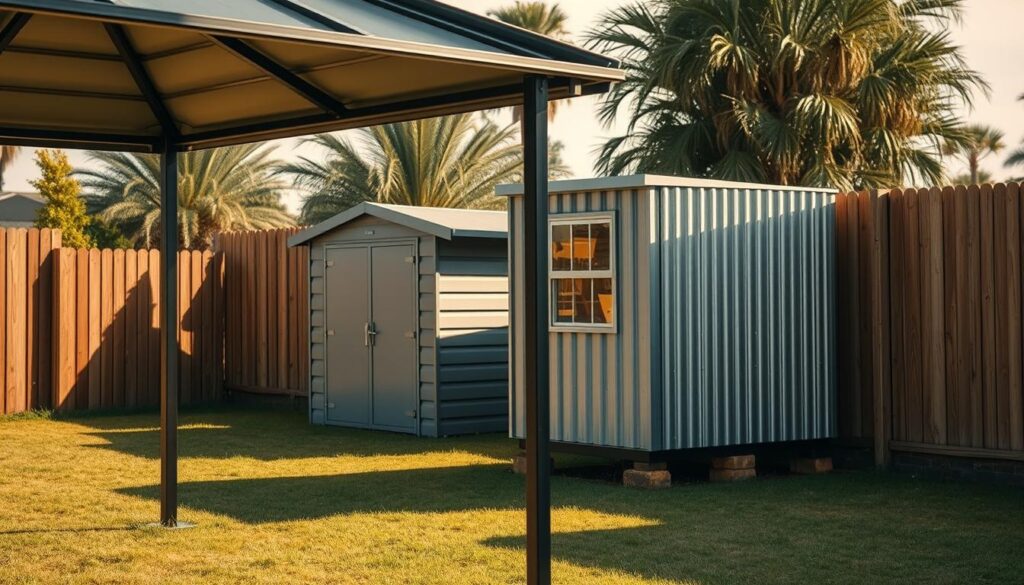
How can I make sure my garden shed is properly anchored down?
Your shed must be anchored well to handle cyclone winds. Bolts need to go into concrete at least 150mm deep. Make sure they’re spaced 1.2 metres apart all around the shed.
Check if your shed meets Queensland’s wind standards. Coastal areas need an N3 rating for safety. Sheds on timber or blocks won’t make it through strong winds.
Upgrading anchors is cheap, costing $30-60 for bolts. This small cost keeps your shed and its contents safe. A well-anchored shed can withstand winds that would destroy an unsecured one.
What are the weak spots in a fence that I should check?
Fence failures often happen at gate hinges, post connections, and panel joints. Walk your fence line and look for rust, loose bolts, or rotting timber at these points.
Colorbond fencing is better than timber in cyclones, but only if posts are 600mm deep in concrete. Shallow posts are the main reason fences collapse in storms.
Hurricane clips are great for fence panels, costing $5-10 each. They keep panels on posts and stop fences from being lifted. Installing clips on weak spots makes your fence storm-proof.
Is my shade sail or pergola covering going to survive a cyclone?
Shade sails can create huge forces in strong winds. Take down fabric panels when winds hit 60 km/h – don’t wait for warnings.
Pergola coverings need different fixes based on material. Polycarbonate sheets need fasteners every 300mm to stay in place. Fabric coverings must be removed before storms.
Adding diagonal bracing to pergolas makes them safer. This costs $50-100 but is worth it. This simple change can save your pergola from damage.
These structures protect your investment all year, not just during cyclones. Reinforcing them keeps them safe and extends their life. This also keeps your neighbourhood safe from debris.
Are parts of my garden’s design a hidden danger?
Design choices in your garden can make it look great but become hazards in cyclones. Many homeowners secure outdoor furniture but forget about landscaping elements. These can turn into dangerous projectiles during storms.
Your garden’s features need a close look for cyclone preparedness. Things that look nice in calm weather can damage property and hurt people when winds are strong.

Why are loose rocks, gravel or paving stones a bad idea?
Loose decorative stones can fly like missiles in cyclone winds. Any stone over 20mm can break windows, damage cars, and harm neighbours.
Secure your decorative stones with adhesive or replace them with plants. Native grasses and low-growing plants control erosion and stop projectiles.
Paving stones must be set right with sand-cement. Loose pavers can fly off and hurt people. Check your paths and patios for loose stones before cyclone season.
Can my garden edging become a hazard?
Edging materials can be risky in bad weather. Steel edging can turn sharp and hurt people and damage property.
Timber edging might splinter and be dangerous. Think about using planted alternatives that are safe and look good.
Living borders with native plants are safe and good for the environment. They keep your garden looking nice and protect against hazards.
What should I do with rubbish bins and compost bins?
Wheelie bins can become like battering rams in cyclones. Secure your bins with bungee cords or chains to fixed points.
Or, put bins inside during warnings. This stops them from damaging your place or hitting neighbours.
Compost bins need special care. Empty tumbler bins and secure them. Cover open bins and weigh them down with sandbags.
Think about sustainable design alternatives for cyclone safety. Use living ground covers, plant borders, and choose integrated features. These make your garden safer and better for the environment, with less upkeep.
How should I prepare my swimming pool or spa?
Protecting your pool and spa from cyclone damage is key. It’s an investment that can save you a lot of money later. Understanding water management, equipment protection, and chemical safety is vital.
Preparing your pool is different from other cyclone prep. Water adds unique challenges. You must protect your equipment while keeping the pool’s structure strong.
Should I empty my swimming pool before a cyclone?
Never empty your swimming pool completely before a cyclone. This can cause huge damage. Draining your pool can lift the shell out of the ground, leading to costly repairs.
Instead, lower the water level to 150-300mm below the coping line. This lets water in for heavy rain while keeping the pool stable. The water acts as a natural anchor.
For above-ground pools, keep water levels at least halfway up the walls. The water weight helps keep the pool stable against strong winds.
How do I stop my pool filter and pump from getting damaged?
Your pool equipment needs quick attention. Start by disconnecting and storing all removable items like cleaners and toys. These can become dangerous during the storm.
Turn off your pool pump and filtration system. Cover them with waterproof materials like plastic sheeting. But don’t move heavy equipment without help.
Remove or secure pool furniture and umbrellas. Pool umbrellas should be dismantled and stored indoors. Use storm shutters to protect structures or equipment housings.
- Disconnect automatic pool cleaners and store indoors
- Remove skimmer baskets and floating accessories
- Cover pumps and filters with waterproof materials
- Secure or remove all pool furniture and umbrellas
- Turn off electrical supply to pool equipment
What should I do with the pool chemicals and cleaning equipment?
Pool chemical storage is important for safety and rules. Store all pool chemicals in their original containers in a secure, dry place. Your garage or a high shelf is best, but make sure it’s well-ventilated.
Never mix different pool chemicals during storage or transport. This can cause dangerous reactions. Keep chlorine products separate from acids and other chemicals. Move chemicals to higher ground if your storage area might flood.
Create a pool-specific emergency kit. This will help you recover quickly after the storm.
Your pool emergency kit should include:
- Water testing strips and basic chemical starter pack
- Pool skimmer net for debris management
- Basic repair materials (pool patch kit, PVC glue)
- Submersible pump for excess water removal
- Heavy-duty garbage bags for debris collection
Remove all pool cleaning equipment from the water and store it securely indoors. Telescopic poles, brushes, and vacuum heads can become dangerous projectiles. Clean and dry all equipment before storage to prevent damage and extend their lifespan.
Document your pool’s condition with photos before the storm arrives. This is important for insurance claims and tracking what needs attention after the storm. Your thorough preparation ensures you can enjoy your pool again quickly once the danger passes.
What is the final cleanup plan as a cyclone gets closer?
When weather warnings get serious, your cyclone prep hits a peak. Good emergency planning means acting fast and following a plan. This keeps your property and family safe.
How many days before a cyclone should I start securing everything?
Start your storm prep 72 hours before the cyclone hits. This gives you enough time to get everything ready without rushing. At 48 hours, get intense: move stuff indoors and check your property.
What is the best way to tie down items that I can’t move indoors?
Use strong marine-grade rope, at least 10mm thick, for outdoor items. Ratchet straps that can handle 500kg+ are best for keeping things in place. Use concrete blocks over 20kg or install ground anchors for better security.
Why is it important to check for blocked drains and gutters?
Blocked drains and gutters can cause huge flood damage in cyclones. Clean out all leaves and debris from gutters and drains. Check water flow by using a hose. Blocked gutters can flood your roof, while blocked drains can flood your home’s base.
In your last 24 hours, make sure everything is ready: check all your prep, charge your devices, and review your evacuation plan. This careful planning helps keep you safe from sudden weather changes.

